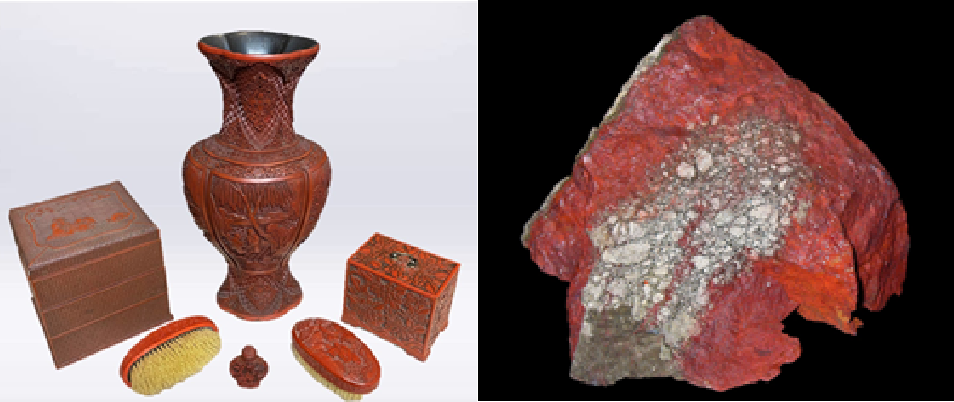Sabra Gossett, Registrar
While the name Cinnabar may sound delicious, it is actually a toxic mercury sulfide mineral! It is a hydrothermal mineral, found near hot springs or recent volcanic activity. Its most striking feature is its deep red color. Because the mineral is somewhat soft, it can be ground into a fine powder, leading to its historical use as a pigment in paint and makeup, as well as in jewelry making. It has also been used in religious and funerary ceremonies.
At the Berman Museum, Cinnabar can be found in pieces of our Asian artifact collection. In China, Cinnabar was used to color lacquer (resin/sap of a tree), which was then carved into intricate patterns. Berman Museum’s Cinnabar pieces include a snuff bottle, brushes, and decorative items, dating to the eighteenth through twentieth centuries. These artifacts can still emit minute mercury vapors, and care has to be had in their storage and handling. The use of Cinnabar has declined due to its toxicity, and pieces manufactured today are made from nontoxic imitation material.

